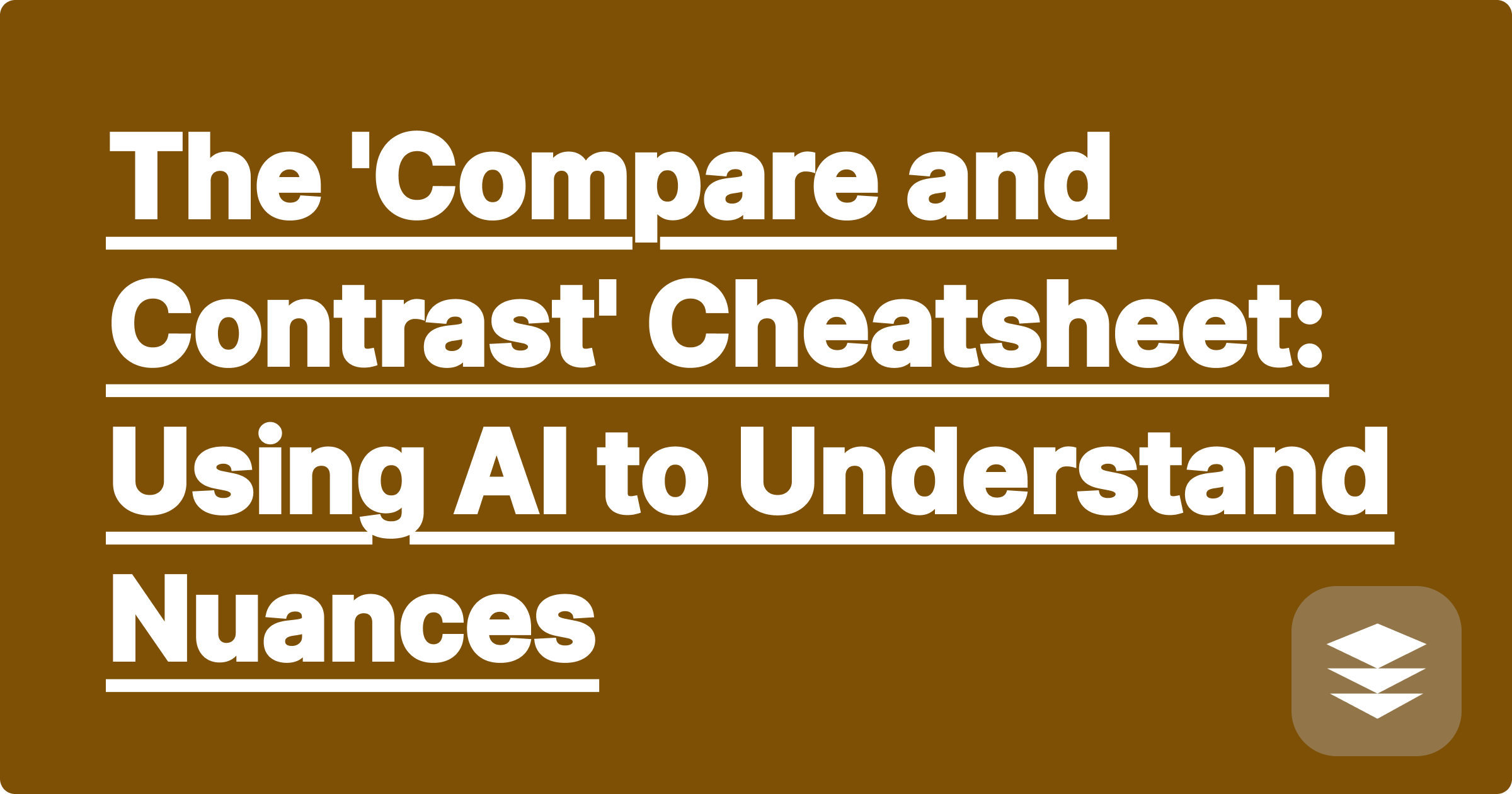
It's a classic exam question designed to test for deep understanding: "Compare and contrast SN1 and SN2 reactions." Or "What are the key differences between mitosis and meiosis?" These concepts are intentionally similar, and if you have a fuzzy understanding, you're guaranteed to lose points. Simply studying each topic in isolation isn't enough; you need to understand them in relation to each other.
Creating a good compare and contrast chart by hand is surprisingly difficult. You have to flip back and forth between two sets of notes, identify the corresponding points of comparison (e.g., rate-determining step, stereochemistry), and organize them into a clean table. It's a high-effort task that's easy to get wrong.
This is where an AI-powered tool like GPAI Cheatsheet excels. It can analyze two concepts simultaneously and create the perfect compare and contrast study guide for you.
The Workflow:
[Image: A screenshot from GPAI Cheatsheet showing a clean, two-column table comparing SN1 and SN2 reactions, with rows for different features as described in the prompt. Alt-text: An AI study guide maker creating a compare and contrast table for chemistry concepts.]
Having this table is a study superpower.
Top grades are often found in the details and nuances. By using an ai to find differences between key concepts, you move beyond simple memorization and toward a deeper, more resilient understanding. This structured approach is the key to confidently answering any "compare and contrast" question your professor throws at you.
[Stop getting confused by similar concepts. Use GPAI Cheatsheet to create a perfect compare and contrast study guide today. Sign up for 100 free credits.]
How to Turn Your Professor's Disorganized Whiteboard Notes into a Coherent Study Guide
The 'Knowledge Block' Method: How to Build a Cheatsheet That You Actually Remember
How to Create a 'Master Formula Sheet' from All Your Courses with AI
Using AI to Find the 'Golden Sentences' in Your Textbook Readings
From Audio to Actionable Notes: A Guide to Using the AI Notetaker
How to Create a Visual Cheatsheet with AI-Generated Diagrams and Mind Maps
The 'Compare and Contrast' Cheatsheet: Using AI to Understand Nuances
How to Turn Your Class Syllabus into a Semester-Long Study Plan
The 'Definition-Example' Pair Method: Building a Practical Study Guide with AI
How to Use the AI Notetaker for Foreign Language STEM Courses